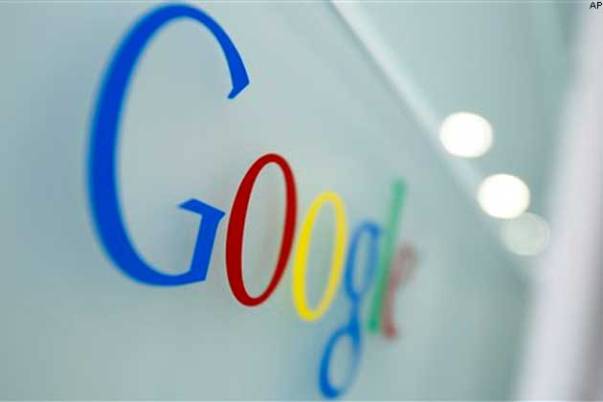Blog Archives
Google releases new Photo Sphere Camera app for iPhone
Google has dropped a new app for iPhone this morning called Photo Sphere Camera. The app offers a special camera that allows you to capture 360º images – everything above, below, and around you – for viewing and sharing. The new app even allows you to publish 360º images you capture to Google Maps for others to see as well. Google notes that the app requires iPhone 4S or higher for capturing images. Photo Sphere Camera is available for free on the App Store joining a long list of other Google apps including its popular game augmented reality game Ingress.
Asus working on the cheapest Android Wear smartwatch; likely to be unveiled in September
The new Android Wear smartwatch from Asus is likely to come with an AMOLED display and could be priced between $99 and $149.
After Google announced the launch of its first set of Android Wear smartwatches at this year’s annual developers conference this week, a new report has come claiming that Asus is also working on its own Android Wear smartwatch.
According to a report from TechCrunch, the watch is likely to come with an AMOLED display and could be priced between $99 and $149 – $50 less than LG’s G Watch.
“Asus had previously discussed including gesture control on its smartwatch to make up for a smaller screen more suitable to wristborne computing, but this was prior to Google’s unveiling of Android Wear so it’s unclear if it’s the same project as the one discussed above,” said the report.
Google unveils invite-only domain registration service
Introducing Google Domains, the service that provides website creation, hosting, and URL transfers and purchases for your business needs.
Small businesses are a part of everyday life. Unlike some corporations and entities that find success and grow into a massive enterprise, most businesses start small, grow a little, and remain relatively small (as compared to the size of corporations).
And currently, 55% of small business owners have no website under which they advertise their products and services. Google sees this as the search engine giant’s next “enterprise.” The new service will be called Google Domains, and its purpose is to help business owners achieve website creation and receive a business URL of any kind to showcase their goods and services. “We’re beginning to invite a small number of people to kick the tires on Google Domains, a domain registration service we’re in the process of building. Businesses will be able to search, find, purchase, and transfer the best domain for their services – whether it’s .com, .biz, .org, or any of the wide range of new domains that are being released to the Web,” Google said in a Google Domains announcement statement at Google+. The search engine giant is currently allowing only those with an invite code to test out transferring and acquiring domains to send feedback about the performance of the service, what needs improvement, and so on.
While Google will certainly be responsible for Google Domains, it will outsource website creation and domain hosting to frontrunners Wix.com, Weebly, Shopify, and Squarespace. You’ll need a $12 annual registration fee to use Google Domains. For more information, visit the Google Domains Beta site.
With Google Domains, a company known for its driverless cars, search engine success, drones and robotics will take over the Internet in a whole new way. Where will Google pop up next? You’ll just have to continue reading us to find out.
Google Play Games gets serious with saved games, controllers, and profiles
Several new major products have just been announced at Google I/O 2014, but behind the scenes, Google is also revealing some changes to its supporting services. One that would excite both gamers and developers alike are the new features for Google’s online gaming platform, preparing Google Play Games for the arrival of Android Land Android TV.
Compared to some other online gaming networks, Google Play Games is relatively new, having been announced only last year. So it isn’t a bit surprising that it is only now that Play Games is implementing the idea of game profiles. This type of “meta-gaming”, as Google calls it, allows players to hoard badges and titles by unlocking in-game achievements, pretty much like how Steam does it for PC games. And to ensure that those achievements are kept for posterity’s sake, Google is adding a new Saved Games service, that will track and record a game’s progress through different screens.
Most of the new features in the upcoming Play Games update are naturally meant for game developers and publishers, like improved game statistics and C++ SDK. Some other highlights of this release is support for the new OpenGL ES 3.1 standard as well as the new Android Extension Pack or AEP. In a nutshell, this will allow developers to bring desktop-quality of graphics to mobile devices, provided the hardware can take the punishment of course. Both of these will be arriving via the Android L Developer Preview.
Last but definitely not the least, Google has formally acknowledge the existence and need for game controllers. They have published a Gamepad standard that OEMs can use when making such controllers, which will definitely help developers support a common game controller standard in their masterpiece. The timing of this new feature isn’t a coincidence. This gamepad standard undoubtedly ties in with Google’s revelation of Android TV, which can also function as a gaming device for a big screen.
Some of these new features will roll out only later together with the Android L preview, but some, like Saved Games and Quests are already being used in updated versions of games on Google Play Store right now, including Asphalt 8: Airborne, Heroes of Camelot, and Robocop.
Google brings significant updates to Drive, Search and Maps
The yearly Google I/O conference is a much-awaited event not just for developers and tech geeks, but even for ordinary users of Google products since they usually make major announcements that will impact our digital life. But even Google I/O is not enough to stay Update Wednesday, as Google just announced massive updates to such apps and utilities like Drive, Search and Maps.
The Google Drive for Android is now updated to make it faster and easier to look for files, as well as features where you can see who else has access to the file, what were the last changes made and even enable offline access for your device for those times where the Internet will fail you. The web version of Google Drive will also be updated in the next few weeks with a new look and speedier access as well. They have also localised Google Drive into 70 different languages, and optimized some of the features to make it easier for visually impaired users. Meanwhile, Google Drive for Business now has a premium offering for companies at $10/user/month. This already includes unlimited storage, uploading files up to 5TB (what kind of file is that big?) and better security and admin controls.
Meanwhile, Google Search on Android got even easier as the update allows the “Ok google” hotword to be said from anywhere in your phone, not just on the Google search page. It will make it more convenient when you’re searching for something and you’re in other apps or even from the lock screen. You will also now have Audio History on your Google Search app where it takes a look at your past voice searches to build a profile and make your searches more accurate. It even studies how you pronounce certain words or even the cadence of your voice so it can understand you better. But if you think that’s a violation of your privacy already, you can opt-out of that feature.
Google Maps has also made small but significant changes to the app. When you view your map, there are now search results on the side which may help you make a quick decision on which restaurant to eat in that area. For those who spend most of their time walking or commuting, the transit results of your search now also show your total walking time to your destination or when is the next scheduled bus or train to that place. Maps also now has an Access Terrain view to give you a 3D view of the area if you’re looking for a place that has a wide landscape or elevated view.
Android, Windows to add ‘kill switch’ to curb phone theft
Google and Microsoft will add a “kill-switch” feature to their Android and Windows phone operating systems.
The feature is a method of making a handset completely useless if it is stolen, rendering a theft pointless.
Authorities have been urging tech firms to take steps to help curb phone theft and argued that a kill-switch feature can help resolve the problem.
Apple and Samsung, two of the biggest phone makers, offer a similar feature on some of their devices.The move by Google and Microsoft means that kill switches will now be a part of the three most popular phone operating systems in the world.
Smartphone theft has become a big problem across the world. According to a report by US authorities: some 3.1 million mobile devices were stolen in the US in 2013, nearly double the number of devices stolen in 2012; one in three Europeans experienced the theft or loss of a mobile device in 2013; in South Korea, mobile device theft increased five-fold between 2009 and 2012; and in Colombia, criminals stole over one million devices in 2013.
Volantis is HTC’s Nexus tablet, specs leaked ahead of Google I/O
It’s been a while since a Google-approved Nexus device hit the market, so speculation is rife if indeed we are going to get our hands on one by the time Google I/O developer conference rolls in. Front and center is HTC’s rumored Volantis, and Android Police is betting on solid information that it has the specs and the build of the next Nexus device down pat.
There was speculation on whether the new Nexus device – initially code named “flounder” – would be a smartphone. But all evidence now points to an 8.9-inch tablet to be manufactured by HTC, known internally in its hallowed manufacturing halls as the Nexus 9. Although a number of things could still change with the marketing name and the possible specs of the product.
The Volantis will be bannered by a 2048×1440 (281ppi) display powered by an NVIDIA Tegra K1 processor (also known as the Logan 64-bit chip). According to the leaked image, it will have a 2GB RAM allocation, an 8MP main camera partnered by a 3MP front-facing camera, and frontal speakers as well. The rumored specs include variants of the tablet in 16GB and 32GB internal storage models, and might also come with options for LTE connectivity.
Also very conspicuous in the image is what HTC calls “aluminum zero gap” construction. In fact, we agree that the unit takes its aesthetic cues from the iPad Mini, with hints of LG’s Nexus 5 and ASUS’s Nexus 7. Again, all of this may still be technically touted as rumors, but the source is apparently adamant that the hardware for the tablet already exists in the real world, going as far as to say that some of the people working at Google are already carrying the device around.
What do you guys think of it?
Report: Google in Talks to Buy Stake in Virgin Galactic
Google is apparently in talks to buy up part of Virgin Galactic, but not to take a leisure cruise: Sky News claims that it will buy “crucial access to satellite-launch technology” to help put its new low-Earth orbiters into the sky.
The report claims that negotiations between the two parties have “been taking place for months” and are now reaching an advanced stage. It’s claimed that the deal is in two parts: first, a $30 million stake in the Virgin Galactic holding company; second, an injection of “hundreds of millions of dollars” into a joint venture, with Virgin Galactic injecting its expertise to help Google with its own projects.
If the report is accurate, it suggests that Google is looking to Virgin Galactic for help with getting its new fleet of low-Earth orbit satellites into space. It recently purchased Skybox Imaging for a cool $500 million in cash in an attempt to make Google Earth a whole lot crisper—and help fulfill Google’s vision of worldwide satellite-based internet access.
Google pays $500M for satellite-imaging startup
Buying Skybox for its imaging capabilities, for starters
Google Inc.’s quest for information and the means to deliver it is taking the company far from earth.
Google on Tuesday agreed to buy satellite startup Skybox Imaging Inc. for $500 million in cash, the latest in a number of moves by the world’s largest Internet search provider to collect and provide data from the sky.
Skybox has designed small, relatively cheap satellites that can collect daily photos and video of the Earth. Founded in 2009, Skybox raised $94 million from investors including Khosla Ventures, Bessemer Venture Partners and Norwest Venture Partners, according to Dow Jones VentureSource. Its founders wrote their first business plan as part of a Stanford University graduate entrepreneurship course, according to the company’s website.
Google said it is buying Skybox mainly for its image capabilities, at least initially. Google also is trying to cover the globe with fast Internet access from the sky, using balloons, drones and satellites. The goal is to get everyone in the world online, which would likely increase the number of Google searches and boost the company’s advertising revenue, as well as usage of services such as Gmail and Maps.
“People want connectivity everywhere and images from everywhere in the world and you just can’t do that as easily from the ground,” said Tim Farrar, president of satellite research firm TMF Associates. “Satellites will help Google reach remote mountains and dense jungles more easily, filling in the places where you can’t justify building terrestrial networks.”
Skybox’s roughly 120 employees will initially work with Google’s Maps business. Google Maps uses images from roughly 1,000 sources currently, including commercially available satellite images. Most of these images of the Earth are updated every few months or years.
Android ‘Nearby’ Feature To Enable Automatic Interaction Between Devices
Rumor has it that Google is soon going to unveil a new Android feature called “Nearby.” Apparently it will enable devices to automatically interact with each other. The feature is reportedly going to come through an upcoming Google Play Services update. The feature is said to allow people to connect, share and do more with people, places and things near them.
In real world scenarios Nearby would be useful for sharing information with others as devices would automatically share and interact based on context. Moreover it would also let users receive deals or additional information about products when they’re in a store that also uses the same technology.
There will be limits on the way Nearby can automatically interact on the user’s behalf. They will presumably be able to choose what information is visible to other people while not having to interact with the device every time they need to share something with devices around them, which could be a friend’s phone or a smart device in the house.
The source does say that Nearby is still in development and its settings haven’t been fully built out just yet. Turning the feature on will reportedly enable it across all of the user’s devices, Location History and Location Reporting will have to be turned on for it to work.
Purported screenshots of Nearby reveal that the feature will have the ability to automatically turn on the mic, Bluetooth and Wi-Fi. This is probably going to not sit well with privacy advocates since Google would have the ability to record audio from a user’s device without them even knowing about it.
Even though it’s going to make interaction between devices much easier Google would still have to adequately answer all privacy related queries. Its not known when the company intends on showing off Nearby, though the possibility exists that it might explain the feature in detail at I/O 2014 later this month.








